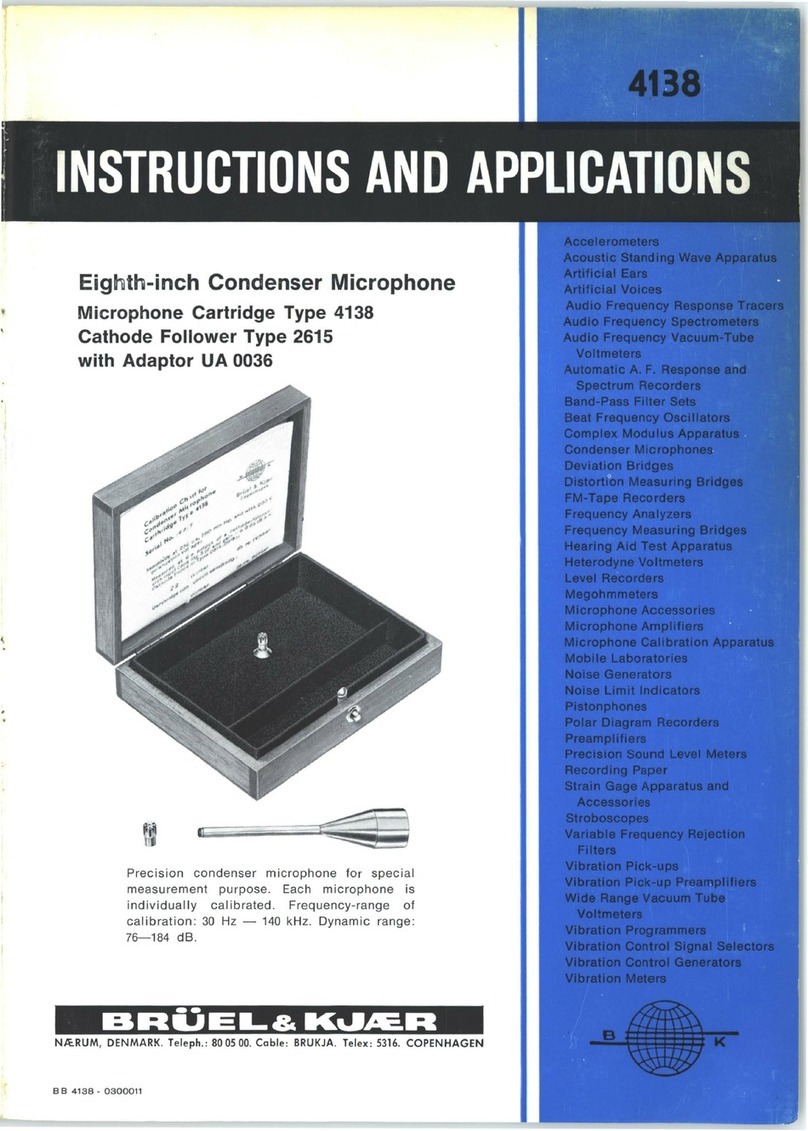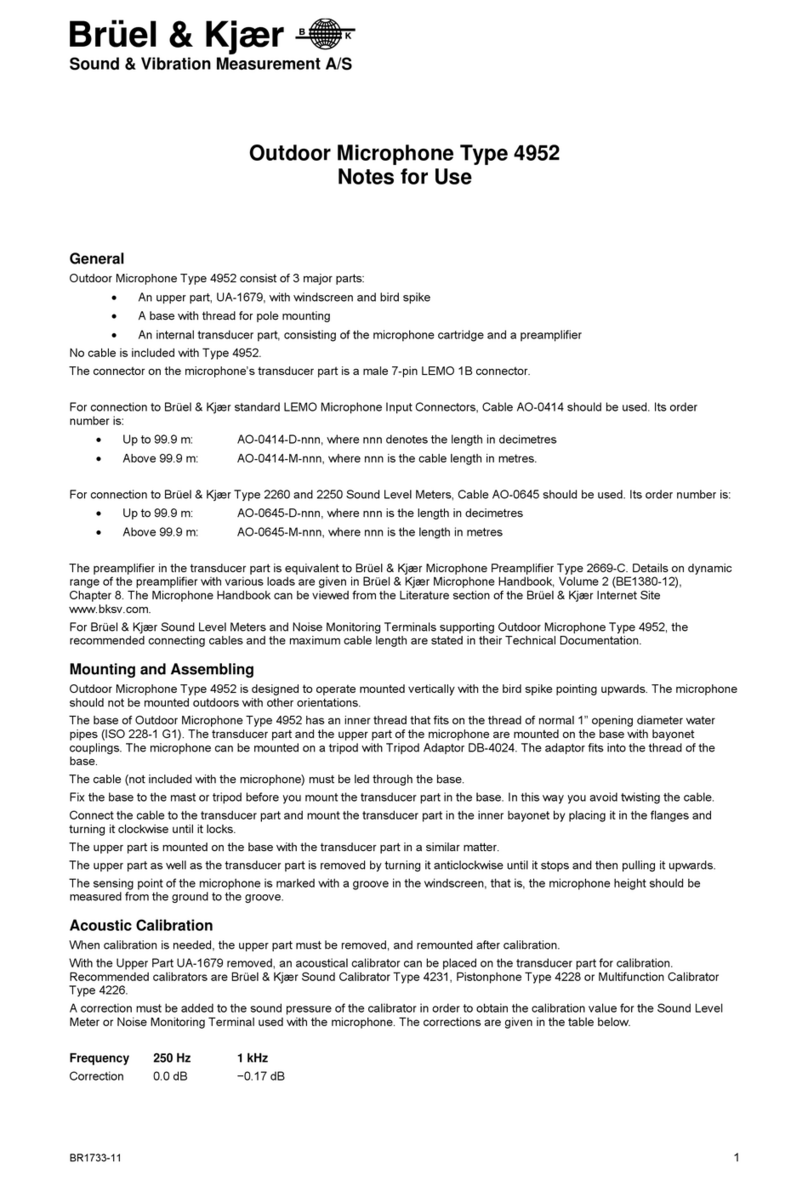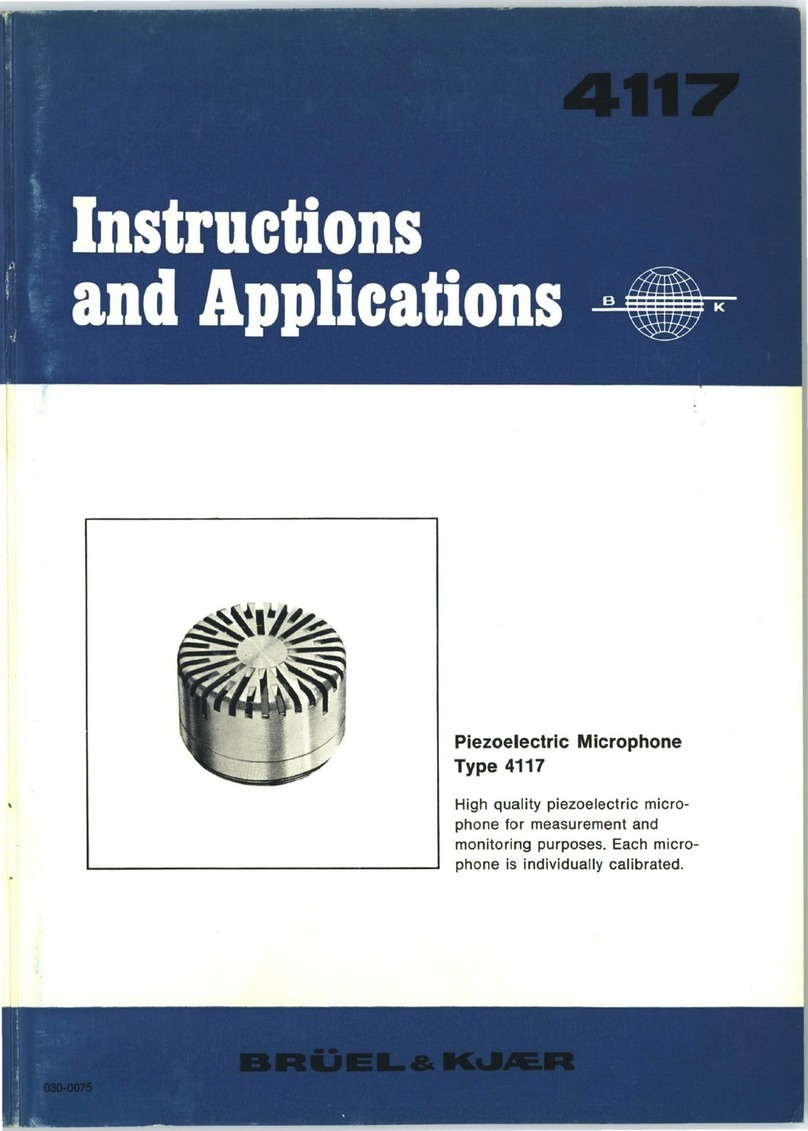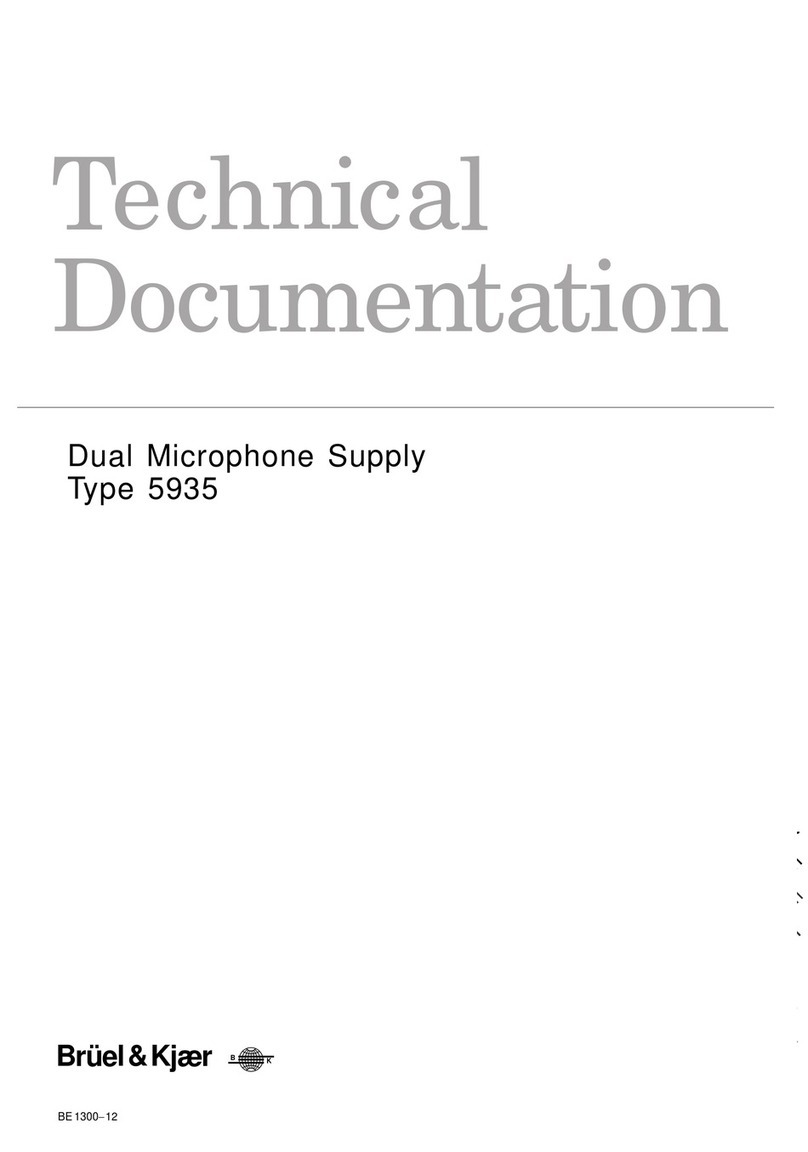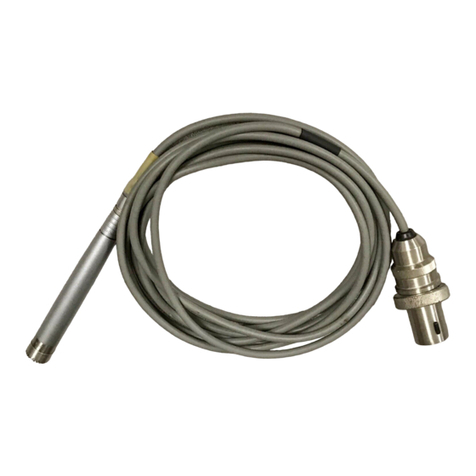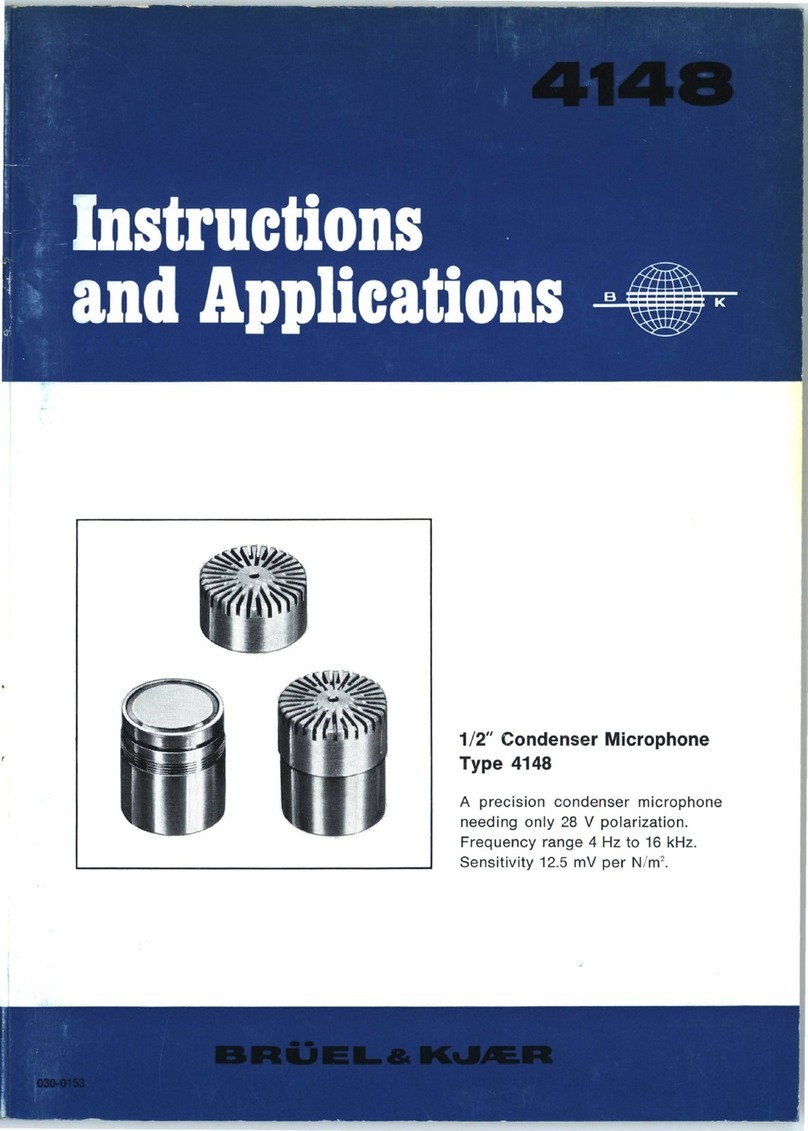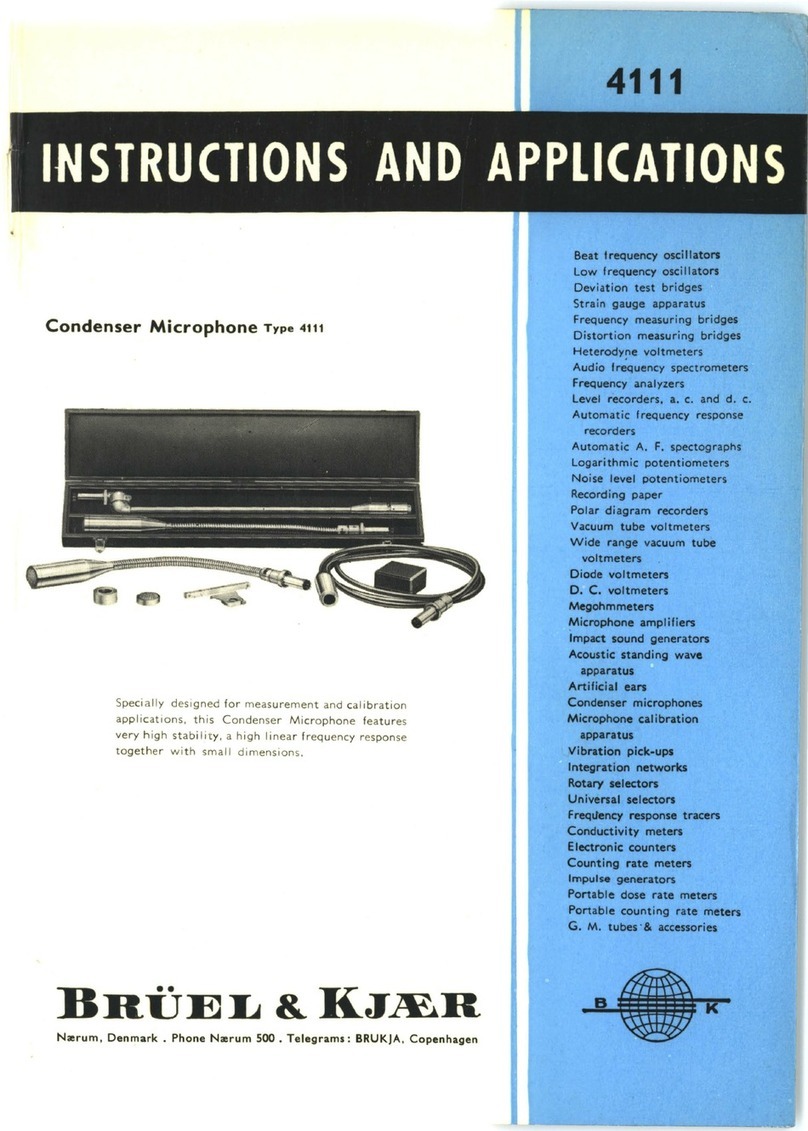
Table of Contents
CHAPTER 1
Introduction.......................................................................................................................................... 1
1.1 About This Supplement............................................................................................................................. 1
1.2 System Overview....................................................................................................................................... 1
CHAPTER 2
Information Required by the Standards ............................................................................................ 3
2.1 Introduction................................................................................................................................................ 3
2.2 Mounting and Placing the Microphone...................................................................................................... 3
2.4 Calibration ................................................................................................................................................. 4
2.7 Measuring at Low Static Pressure............................................................................................................. 4
CHAPTER 3
Conformance Testing.......................................................................................................................... 5
3.1 Introduction................................................................................................................................................ 5
3.2 Mounting for Acoustical Tests ................................................................................................................... 5
3.3 Periodic Testing of Acoustical Frequency Responses .............................................................................. 5
3.4 Mounting for Mechanical Vibrations Tests................................................................................................. 5
3.5 Electrical Substitute for Microphones........................................................................................................ 6
CHAPTER 4
Specifications ...................................................................................................................................... 7
4.1 Specifications ............................................................................................................................................ 7
4.4 Reference Conditions for Acoustic Calibration.......................................................................................... 7
4.5 Microphone................................................................................................................................................ 7
4.7 Directional Responses............................................................................................................................. 10
4.8 Self-generated Noise............................................................................................................................... 13
4.9 Measuring Ranges .................................................................................................................................. 17
APPENDIX A
Tables ................................................................................................................................................. 23
A.2 Free-field Frequency Responses ............................................................................................................ 23
A.3 Diffuse-field Frequency Responses......................................................................................................... 26
A.4 Free-field Frequency Responses for Diffuse-field Calibrated Instruments.............................................. 27
A.5 Directional Responses............................................................................................................................. 28
A.6 Periodic Testing of Acoustical Frequency Responses ............................................................................ 35
APPENDIX D
Using Microphone Type 4184-A ....................................................................................................... 37
D.1 Mount Pistonphone Type 4228 onto Type 4184-A.................................................................................. 37
D.2 Mount Multifunction Acoustic Calibrator Type 4226 onto Type 4184-A................................................... 38
D.3 Mount Electrical Substitute for Microphones on the Built–in Microphone Preamplifier ........................... 40
INDEX........................................................................................................................................................................... 43
